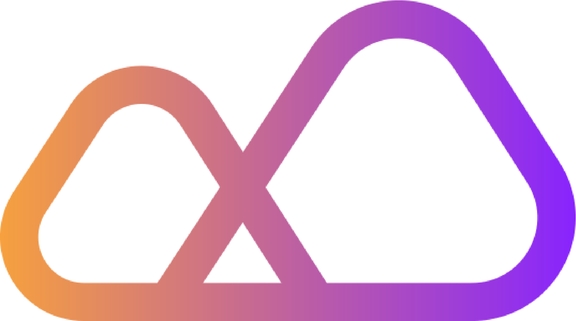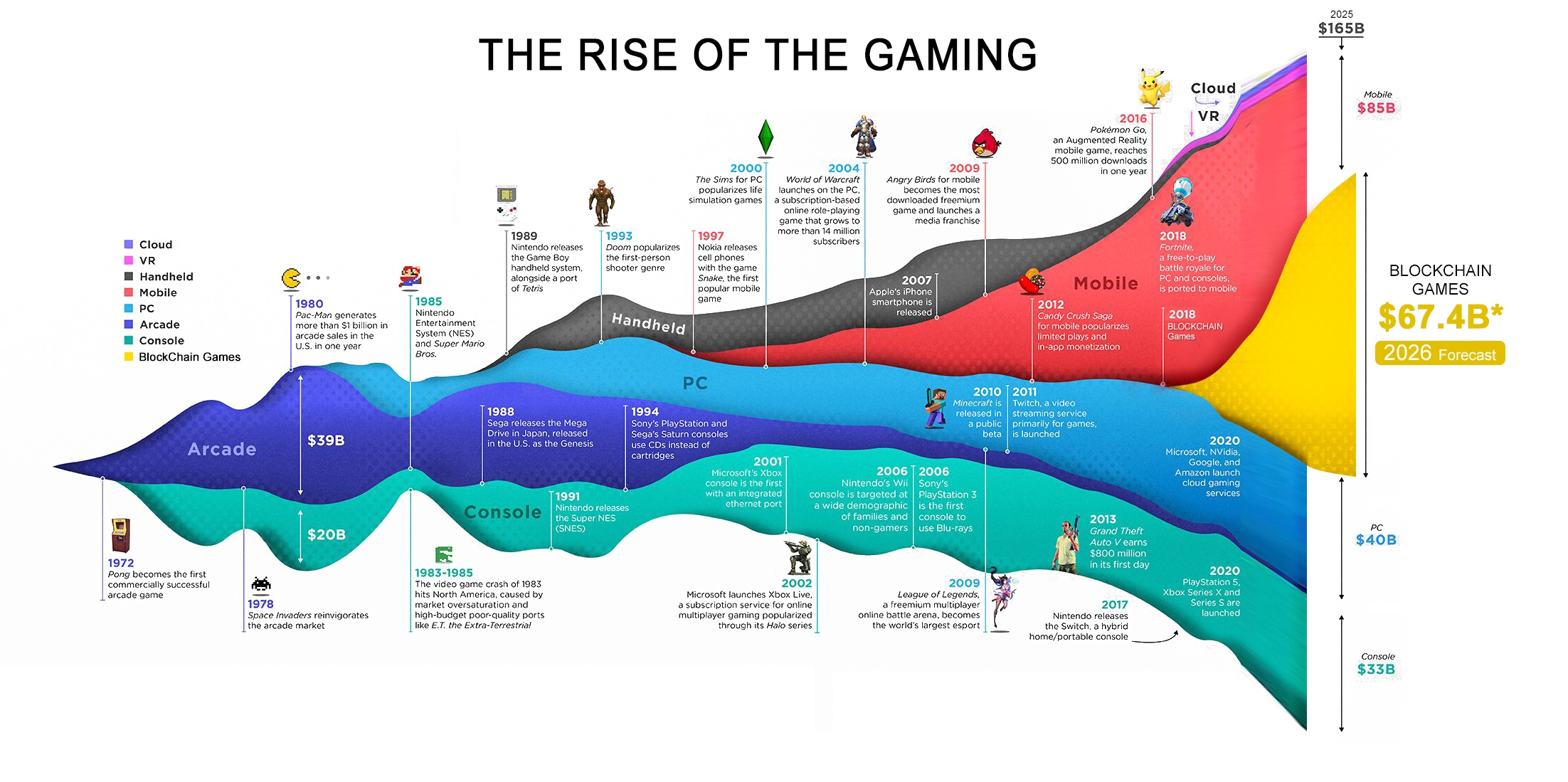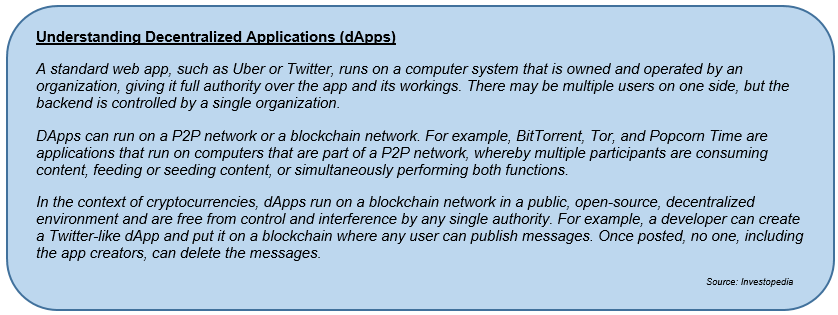📊Market Research
Early days - DeFi gamification and the rise of non-fungible tokens
Since 2017 when the first NFT game launched on the Ethereum network, there have been waves of evolution, complexity, and market reception. But then a groundbreaking concept took off in 2019: Non-fungible tokens (NFTs).
The innovative element they offer is the capacity to create provable digital scarcity for the first time in history. It is easy to understand why the gaming sector saw a great use case for this innovation.
The first wave of NFT games had a passive game experience, relying on players' actions that resulted in the collection of resources over time with a more significant focus on educating the audience about Decentralized Finance (DeFi) through basic gamification mechanisms.
Quickly, the projects started to integrate more complex concepts that enhanced the usability of NFTs within games, around the ability of the NFTs to merge and "breed" new, more complex, and rarer ones that players would own and, therefore, be in total capacity to trade and profit from.
Still, first-gen NFT games lacked long-term player engagement, proper in-game economy, and concerns over digital scarcity.
2nd generation NFT gaming and dApps
The second generation of NFT games saw the rise of the Play-to-Earn concept; with games built on dApps, developers started focusing on improving long-term player engagement through their in-game digital economies. These in-game tokens or rewards can either be used in-game, traded on exchanges, or used to trade or mint more valuable NFTs.
Incentivising players with an innovative play-to-earn ecosystem brought more players into the crypto ecosystem and drove up engagement as the game essentially became part of a person's life and income stream.
The struggle for Economy Balancing
Usually, during the early launch of Web3 games, developers tend to emit higher rewards rates, resulting in players earning so many tokens that they can do it for a living or even get richer and can afford real-world luxury assets.
That was enough to attract the masses who were not well-educated on cryptocurrencies and tokenomics. Most people joined and dug through every loophole, both in-game and DeFi, to manipulate the price and make as much money as possible.
As a result, as it has been observed in the past year or two, many games could not sustain authentic gameplay, and their values were abused; the game token price went through a hype, then pump-and-dump, and then game developers either left the project or staged a rug-pull event.
Play-to-Earn games can work, but they need much more quality, better balance, better gameplay, and much better thought-out tokenomics and use cases equally distilled into the game ecosystem.
BoomLand is uniquely positioned as a Blockchain Game Developer and Publisher with its vast experience in publishing mobile games for the past ten years and generating over 1 billion downloads to date.
Balancing a Web3 game token economy in a healthy and sustainable way is not dissimilar to balancing a successful and profitable Web2 mobile game which BoomLand has huge experience in doing so.
Web2 games also have an in-game economy, albeit with virtual currencies. This virtual currency is earned by players for playing the games and spent by players with in-game items. If the economy is unbalanced, players will not engage with the in-game assets and affecting the game's success over time. Balancing a Web2 game economy is a very delicate and meticulous process to make sure the game is not too hard, causing players to churn, or too easy and not challenging enough.
BoomLand has developed over the years a very sophisticated data-driven methodology to track user flow and economic behavior. Via the BoomLand Business Intelligence stack, it is easy to check, manage and adapt at any given time the onboarding process with trackable events giving the team clear indications of churn points. This process delivers a very clear vision of the in-game economy both from the tokens being awarded to players and the in-game sink points available for players to spend or invest those hard-earned assets thus creating a healthy and balanced economy.
Furthermore, to make reliable, data-driven decisions on both the difficulty and the economic balance, a game needs to have statistically relevant data, which is only possible with a vast number of data points. In Web2, this is possible due to the large number of installs that successful games can achieve. However, in Web3, most games get just a few thousand downloads which makes it extremely challenging to paint a reliable picture of the game's economy, thus making it hard for developers to reach reliable conclusions about the state of their game.
For this reason, it is imperative that for Web3 games to be successful, a better approach is to adopt successful Web2 games with a solid track record, strong game economy, millions of downloads, and live service model with a regular cadence of updates, whereas games that are published on Web3 first will always struggle to grow their user-base large enough to reach this statistically significant data in order to take meaningful action and properly balance those games.
Not only will BoomLand answer the game balance and sustainability problems, but it has also identified how to provide competitive blockchain technology expertise and secure smart contracts development to fill the gaps that previous games could not have delivered or sustained.
Play-to-Earn is the driver for the current generation of NFT games; the upcoming third generation of NFT games will need a larger community of real gamers, together with balanced economic incentives. The next generation of NFT games is expected to come with a more refined gaming experience, leveraging the strengths of play-to-earn tokenomics, game economy balance, well-connected DeFi ecosystems, and NFT markets which, while having fun in the game, increase the value for the entire ecosystem.
It should not be a zero-sum game, as productivity is created with engaging gameplay and a continuous launch of new games with ever-expanding use cases. Thus, it should be categorized as "Play AND Earn," as this underlines earning as a simultaneous event with playing.
Playing should be a fun experience for Web3 players rather than a prerequisite to earning.
Last updated



